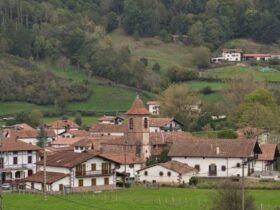Introduction
You ever stumble across a word that just feels important, even if you’ve never heard it before? That’s exactly what happened when I first encountered “Lidarmos.” It wasn’t in any textbook, historical archive, or even a fantasy novel—just a whisper on the wind, or perhaps a slip in the algorithm of fate.
But here’s the thing: Lidarmos isn’t just a word. It’s a doorway—a concept, a legend, maybe even a place. One that’s been erased from maps, forgotten by time, but remembered somewhere deep in the corners of human curiosity.
Let’s unravel the riddle, shall we?
What Is Lidarmos?
At first glance, Lidarmos sounds like something plucked straight out of a Tolkien tale or whispered by ancient sages. While there’s no definitive historical record to tie it down, recurring whispers of Lidarmos appear across obscure texts, local folklore, and digital fragments scattered across forgotten corners of the web.
A Living Myth or Reality Dressed as Fiction?
Some say Lidarmos was once a powerful city-state—an ancient citadel protected by elemental guardians and veiled in illusion. Others insist it’s a metaphysical plane of consciousness—accessible only through intense meditation or astral travel.
Here’s what makes it fascinating:
-
Lidarmos is said to house the Library of Echoes, a place where every thought ever conceived by humans is stored.
-
The Lidarmi, as the inhabitants are called, allegedly communicate in tonal waves, not words.
-
Time supposedly flows differently there: faster for the uninvited, slower for the attuned.
Whether it’s myth, metaphor, or multiverse—Lidarmos refuses to be neatly labeled.
The Origins of Lidarmos: Truth or Tale?
If you trace ancient languages and spiritual texts long enough, you start to find some interesting patterns. While mainstream history doesn’t list Lidarmos, whispers of similar-sounding places appear in various traditions.
Comparative Clues
-
In old Etruscan scrolls, a city named “Lidarum” was said to vanish during celestial alignments.
-
Tibetan mystics talk about “Li Dar Ma”—a realm beyond the veil, reachable through dreamwalking.
-
In modern syncretic esotericism, “Lidarmos” has cropped up as a meditation keyword meant to “unlock higher frequencies.”
Coincidence? Maybe. But you know what they say about smoke and fire…
The Core Beliefs of Lidarmos: What Did the Lidarmi Believe?
To understand a people (real or imagined), you’ve got to walk a mile in their shoes—or in this case, vibrational sandals.
The Lidarmi Philosophy (As Pieced Together):
-
Everything is Vibration
To the Lidarmi, words, thoughts, and even emotions were vibrational constructs. They believed in tuning their own frequencies to interact harmoniously with their environment. -
The Echo Principle
Every action sends out a ripple, or “echo,” that returns eventually. Not karma exactly—more like resonant consequences. -
The Mirror Mind
They trained to “mirror” the world around them—not to copy, but to resonate. Kind of like tuning forks that amplify their surroundings. -
Time Is a Spiral
They didn’t view time as linear. Instead, life moved in repeating spirals, with opportunities to make better choices each loop.
Honestly, the more you read into it, the more it feels like philosophy meets quantum physics with a dash of spiritual psychedelia.
The Map of Lidarmos: Realms Within a Realm
If you’re expecting castles and dragons, you’re not entirely off the mark. But Lidarmos goes far beyond typical fantasy tropes.
Alleged Sectors of Lidarmos:
-
The Opaline Keep – Said to be the seat of vibrational governance.
-
The Veilgrove – A forest where thought forms take physical shape. Imagine walking into a dream that breathes back at you.
-
The Memory Reef – A crystalline sea where travelers “download” ancestral knowledge.
-
The Loom of Silence – No one knows exactly what happens here, but tales say that fate is rewoven in its halls.
These zones aren’t geographical—they’re experiential. You don’t reach them with footsteps, but with shifts in perception.
Modern-Day Relevance: Why Lidarmos Still Matters
Alright, let’s get real. Why should you care about a place that might not even exist?
Because Lidarmos is more than a location. It’s a metaphor, a mirror, maybe even a movement. In a chaotic world, the idea of a realm governed by harmony, resonance, and conscious intent is… oddly comforting.
Here’s What We Can Learn from Lidarmos:
-
Tune in, don’t zone out. Awareness changes reality.
-
Your thoughts echo. Be mindful of what you put out there.
-
Time’s giving you chances. Don’t beat yourself up—evolve through the spiral.
-
The unseen matters. Just because something isn’t visible doesn’t mean it isn’t real.
And isn’t that what most of us are searching for? Meaning, purpose, alignment?
Frequently Asked Questions About Lidarmos
Q: Is Lidarmos a real place?
A: That depends on how you define “real.” Physically? Probably not. Experientially or symbolically? Absolutely.
Q: Can I visit Lidarmos?
A: Not in a travel brochure, but possibly through deep meditation, lucid dreaming, or psychedelic states (though we’re not endorsing that). Some say it’s about tuning into the right frequency.
Q: Who are the Lidarmi?
A: The alleged inhabitants of Lidarmos—beings said to vibrate at a higher resonance. Some believe enlightened humans can become Lidarmi.
Q: Is there a religious or cult aspect?
A: No organized group claims ownership of the Lidarmos mythology. It’s more of a fluid, metaphysical idea than a doctrine.
Q: Where did the term ‘Lidarmos’ originate?
A: That’s still unclear. It may have roots in multiple ancient languages or might be a modern construct with ancient echoes.
The Lidarmos Effect: A Personal Reflection
A few years back, during a particularly stressful patch of life, I stumbled upon the concept of Lidarmos. Whether it came from a dream, a fragment of an old text, or my own subconscious—I honestly couldn’t tell you. But the idea took root.
I began experimenting: tuning into my emotional frequencies, practicing mirror-mind meditation, imagining time as a spiral rather than a deadline. Slowly, things shifted. Synchronicities increased. Life felt less random, more aligned.
So yeah—maybe I never physically walked through the Opaline Keep, but I felt like I had. And sometimes, that’s enough.
Conclusion: Lidarmos Isn’t a Place—It’s a Possibility
In the end, Lidarmos may never show up on a map. But that doesn’t mean it’s not real. It lives in symbols, synchronicities, inner awakenings, and whispered truths you feel in your gut but can’t quite explain.
Think of it like this: Atlantis, Shambhala, El Dorado, Lidarmos—each one pointing toward a collective human yearning for a better, more harmonious way to live and be.
Maybe it’s not about finding Lidarmos, but becoming it.
Recap: Why Lidarmos Captures the Imagination
-
It’s a compelling blend of mystery, mythology, and mind-expansion.
-
Offers timeless philosophical insights with modern relevance.
-
Blurs the line between inner and outer worlds.
-
Inspires personal growth and deeper awareness.
So, next time life feels out of tune, close your eyes and listen for the faint hum of Lidarmos. Who knows? You might just be one shift away from unlocking your own echo within the spiral.
And if you do find it—don’t forget to send a postcard.






Leave a Reply